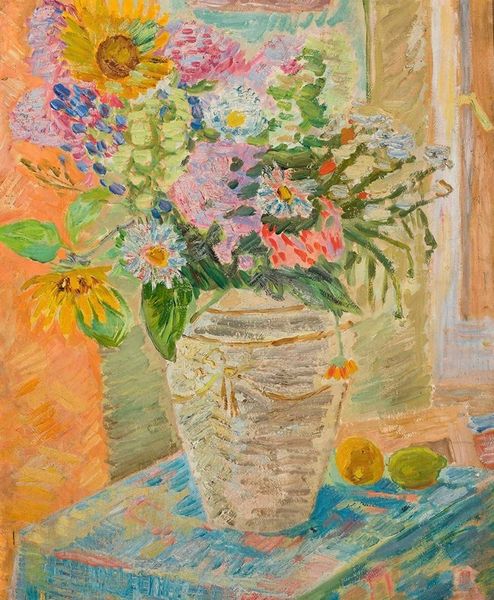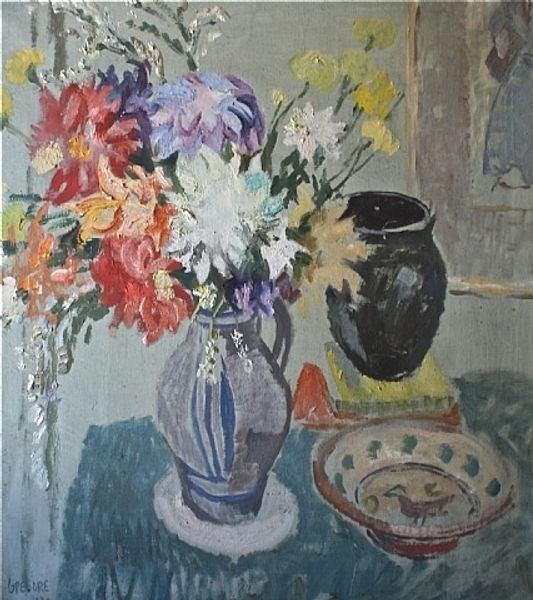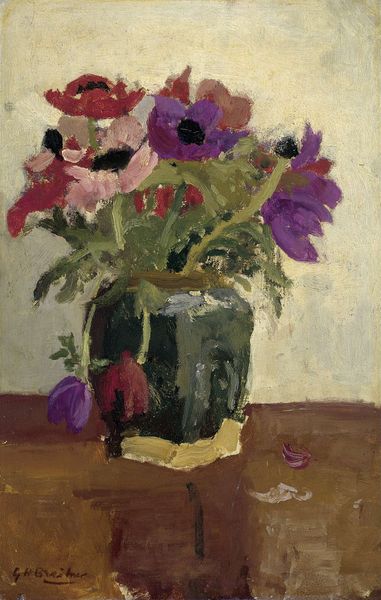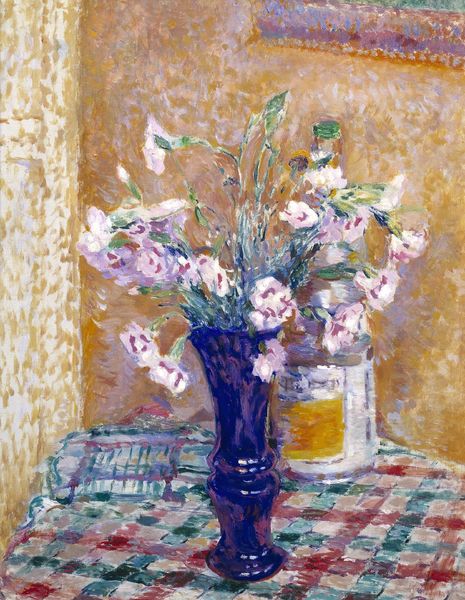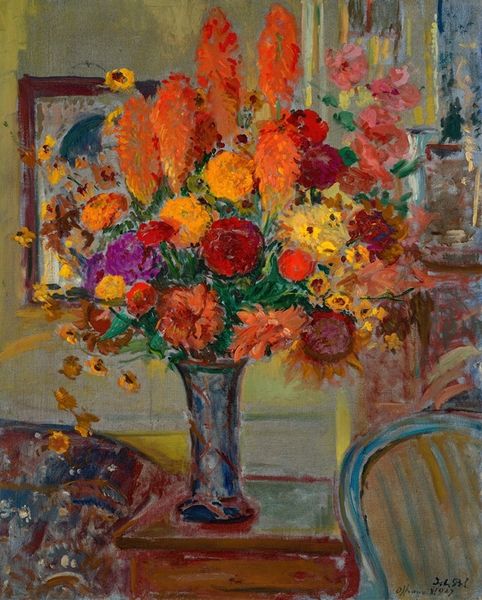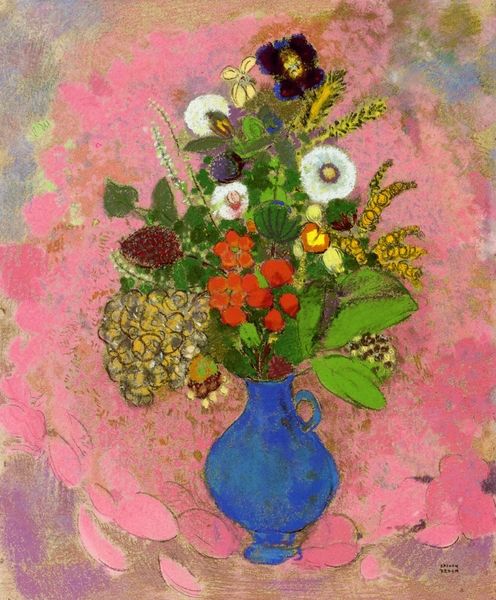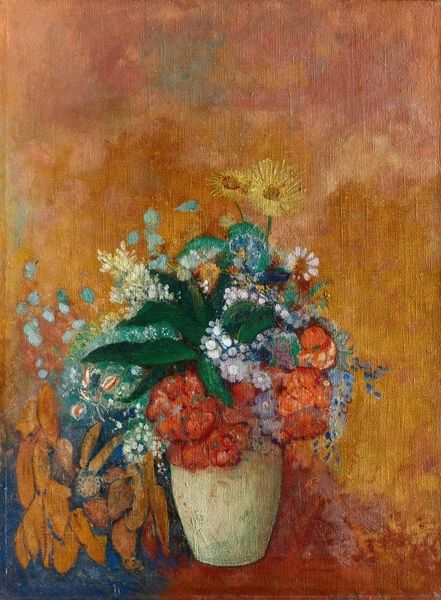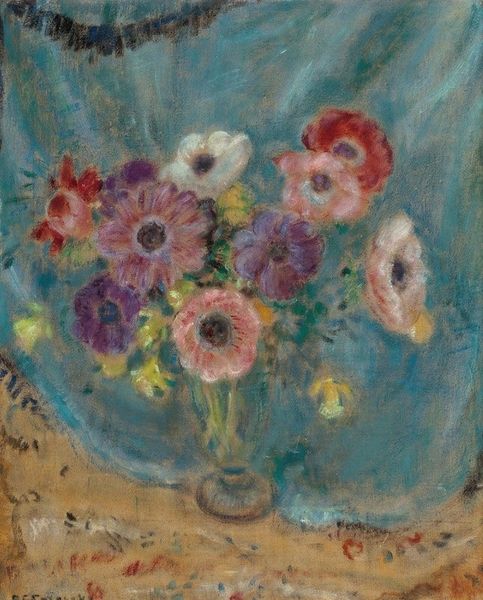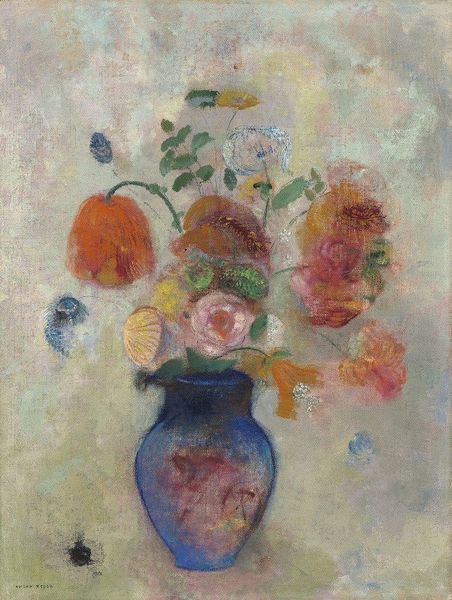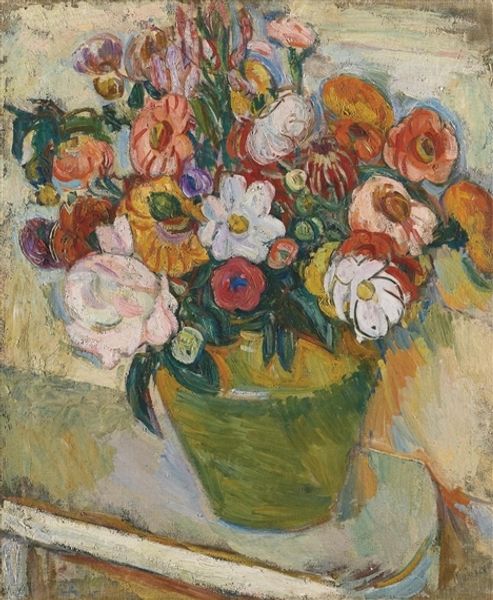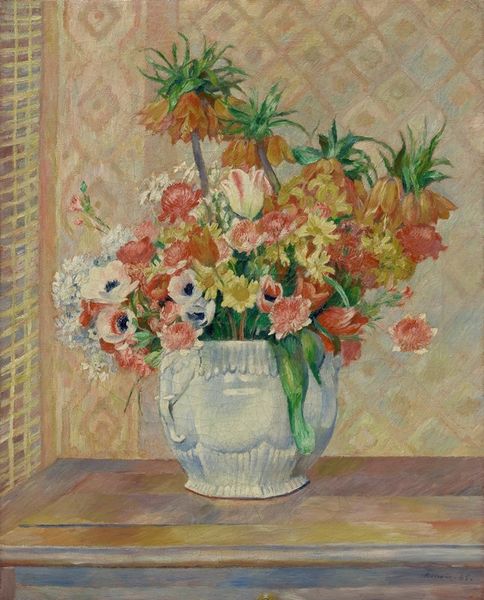
oil-paint, impasto
#
impressionism
#
oil-paint
#
impasto
#
intimism
#
romanticism
#
genre-painting
#
post-impressionism
Copyright: Public Domain: Artvee
Editor: Here we have Henri Lebasque’s *Nature morte au bouquet*, an oil on canvas that seems to glow with domestic warmth. I’m struck by how the flowers in the pitcher almost compete with the wallpaper behind it. What do you see in this piece? Curator: I see a negotiation, perhaps even a challenge, to the traditional boundaries of the domestic sphere, often gendered and racialized. The vibrant, almost clashing patterns and the seemingly haphazard arrangement of the flowers disrupt any easy reading of domestic tranquility. Do you think Lebasque is reinforcing or questioning societal expectations for women and domesticity? Editor: That's a fascinating perspective. I hadn't considered it as a commentary on women's roles. I mostly saw it as a pretty, albeit somewhat chaotic, still life. Are you suggesting that even in a seemingly innocuous genre like a floral still life, there’s an underlying dialogue about power and social norms? Curator: Absolutely. Post-Impressionist paintings like this emerged from a society undergoing rapid social and political change. What is the relationship between these blossoms bursting out of their vase and women constrained within this space? The flowers push outward, towards the viewer, against the confines of the wallpaper. The female body, traditionally confined in the interior space, also pushes towards liberation. Also, consider that this ‘genre-painting’ is romantic. Romanticism and impressionism sought to uplift genre-painting, but from the perspective of social criticism, Lebasque did well to contribute a politically charged still life. How does considering those intersections reshape your interpretation? Editor: It definitely gives me a lot to think about! I see it now as more than just a pretty picture. It's like Lebasque is using the flowers to subtly question the established order, even within the confines of a seemingly innocent domestic scene. Thanks, I will research this painting more thoroughly, so I can inform other listeners in an adequate way. Curator: Indeed! And that exploration can, in turn, illuminate our understanding of the social context surrounding both the creation and reception of art, which allows us to understand that art and social history is related and not isolated.
Comments
No comments
Be the first to comment and join the conversation on the ultimate creative platform.
